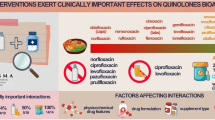Summary
A wide range of administration routes can be drawn on to optimise drug absorption. Though the oral route remains the favourite one for most drugs in many disease states, other routes are routinely used. Each has its strengths and weaknesses and needs to be selected carefully with full consideration of the drug, its target and the release pattern required. Advances in pharmacology and biopharmaceutics have led to exciting developments in the ways drugs can now be administered. Optimising drug administration means finding answers to a number of questions. These questions include: what, how, when and where to deliver, and how to retain the drug long enough for it to be fully effective. These issues are linked; route of administration, drug and therapeutic systems are interrelated; thus the choice of what to deliver influences how, when and where to deliver. Various definitions of ‘usual/unusual’ administration routes are presented, depending on the factors that determine the fate of the active ingredients, on the delivery device, and on the therapeutic objectives to be met. The various dosage forms designed for these routes, and the administration strategies developed to achieve the desired effects are described.
Similar content being viewed by others
References
Ritschel W.A. (1986): Handbook of Basic Pharmacokinetics. Hamilton, Drug Intelligence Publications.
Chien Y.W. (1992): Novel drug delivery systems, Drugs and Pharmaceutical Sciences, Vol 50. New York, Marcel Dekker.
Mestiri Islasse M. (1991): Implants polymères de cisplatine: mise au point galénique et étude pharmacocinétique expérimentale. Thése Doctorat Université Paris Sud.
Otsuka M., Matsuda Y., Fox J.L., Higuchi W.I. (1995): A novel skeleton drug delivery system using self-setting calcium phosphate cement. J. Pharm. Sci., 84, 733–736.
Hernigou P., Thiery J.P., Voisin M.C., et al. (1989): Methotraxate diffusion from acrylic cements: local chemotherapy for bone tumors. J. Bone Joint Surg., 71B, 804–811.
Akamo Y., Yotsuyanagi T., Mizuno I., et al. (1993): Delivery of lymph node-targeted adriamycin by gastric submucosal liposomal injection in rabbits. Jpn. J. Cancer Res., 84, 208–213.
Saettone M.F., Salimen L. (1995): Ocular inserts for topical delivery. Adv. Drug Delivery Rev., 16, 95–106.
Le Bourlais C.A., Treupel-Acar L., Rhodes C-T., Sado P-A., Laverge R. (1995): New ophthalmic drug delivery systems. Drug Dev. Ind. Pharm, 21, 19–59.
Sene C., Bout A., Imler J.C., et al. (1995): Aerosol-mediated delivery of recombinant adenovirus to the airways of nonhuman primates. Hum. Gene Ther., 6, 1587–1593.
Bellon G., Pavirani A., Lamy D., et al. (1994): Peut-on guerir la mucoviscidose? La recherche, 270, 1119–1121.
Wallace B.M., Lasker J.S. (1993): Stand and deliver: getting peptide drugs into the body. Science, 260, 912–913.
Scrip Reports (1994): Drug Delivery Systems. PJB Publications.
Davis S.S. (1992): Delivery systems for biopharmaceuticals. J. Pharm. Pharmacol., 44 (suppl. 1), 186–190.
Friend D.R. (1991): Colonic-specific drug delivery, Adv. Drug Delivery Rev., 7, 149–199.
Friedman M., Steinberg D. (1990): Sustained release delivery systems for treatment of dental diseases. Pharm. Res., 7, 313.
Labhasetwar V., Levy R.J. (1995): Novel delivery of antiarrhythmic agents. Clin. Pharmacokinet., 29, 1–5.
Radovsky A.S., Van Vleet J.F. (1989): Effects of dexamethasone elution on tissue reaction around simulating electrodes of endocardial pacing leads in dogs. Am. Heart J., 117, 1288.
Lincoff A.M., Topol E.J., Ellis S.G. (1994): Local drug delivery for the prevention of restenosis, fact, fancy and future. Circulation, 90, 2070, 2084.
Richardson J.L., Illum L., Thomas N.W. (1992): Vaginal absorption of insulin in the rat: effect of penetration enhancers on insulin uptake and mucosal histology. Pharm. Res., 9, 878–883.
Chien Y.W. (1987): Transdermal controlled systemic medications. Drugs and Pharmaceutical Sciences, Vol 31. Marcel Dekker.
Langer R. (1990): New methods of drug delivery. Science, 249, 1527–1533.
Tachibana K., Tachibana S. (1991): Transdermal delivery of insulin by ultrasonic vibration. J. Pharm. Pharmacol., 43, 270–271.
Miyazaki S., Mizuoka H., Oda M., et al. (1991): External control of drug release and penetration: enhancement of the transdermal absorption of indomethacin by ultrasound irradiation. J. Pharm. Pharmacol., 43, 115–116.
Hnatyszyn H.J., Kossovsky N., Gelman A., et al. (1994): Drug delivery systems for the future. PDA J. Pharm. Sci. Technol., 48, 247–254.
Author information
Authors and Affiliations
Rights and permissions
About this article
Cite this article
Beyssac, E. The unusual routes of administration. European Journal of Drug Metabolism and Pharmacokinetics 21, 181–187 (1996). https://doi.org/10.1007/BF03190268
Issue Date:
DOI: https://doi.org/10.1007/BF03190268




